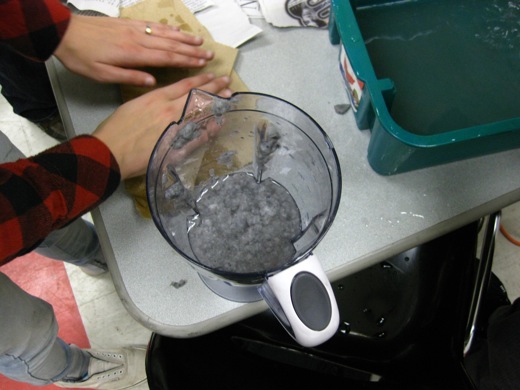
It’s been a busy last week, getting back from Victoria, and launching the Text In-Transit Call For Submissions, but we still had time to meet for our weekly Office Hours and continue working with the Massey Physics Club. Our adventures in paper making for an upcoming planters project we have in mind, and in learning more high school physics and math are after the jump.
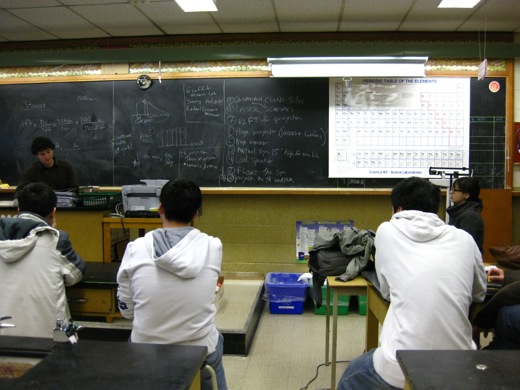
Danielle and I went over to Massey to meet with the Physics Club again to continue working towards a plan for our Message to Detroit project. The students had done the calculations since last week and found that the letters for the sign would have to be approximately 15′ high, which at the length of the line we were thinking about, would either end up being way too long, or would have to be 30′ high to accommodate both lines of the text.
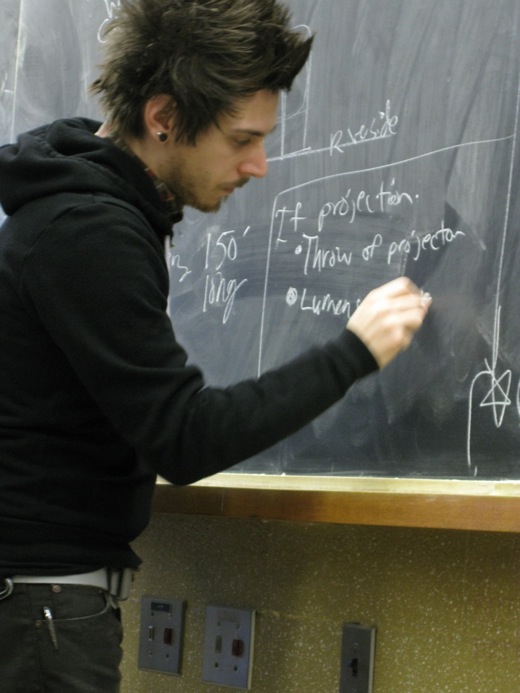
We made a lot of lists, trying to narrow down what’s actually possible in thinking through the project. It seemed like there was a consensus towards working with projection instead of building a physical sign.
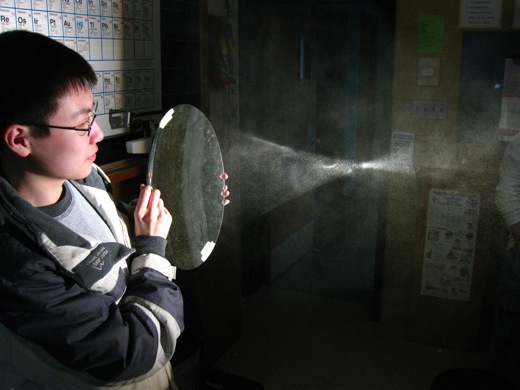
So, in trying to think about how to get a projection large enough without having to position a projector in a precarious position (like in the Detroit River), the students started experimenting with mirrors. The point where the light seems to cross over is the point at which the image changes from being right-side up, to upside-down. This mirror was concave, though to get the image larger, we would have to use a concave mirror.
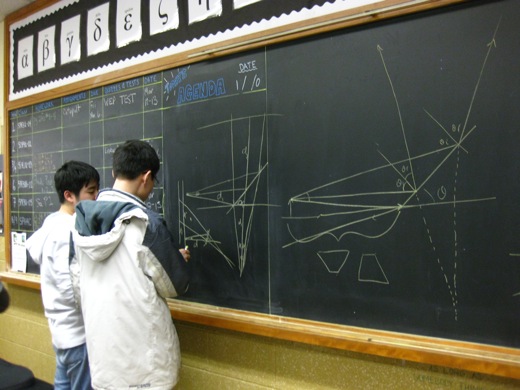
The students were doing some crazy math to figure out where and how the mirror might need to be positioned.
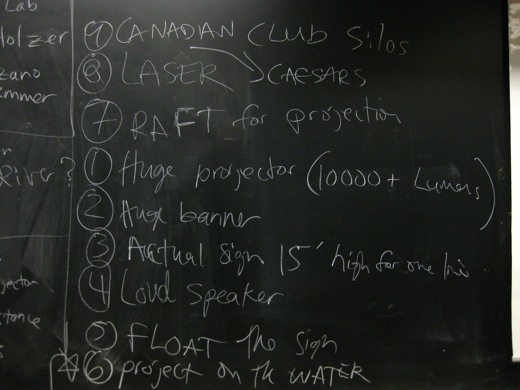
The list of potential solutions to getting the text large enough to be legible from Detroit. We’re meeting again this coming week to try to finalize the solutions and begin to do a rough budget for renting a projector.
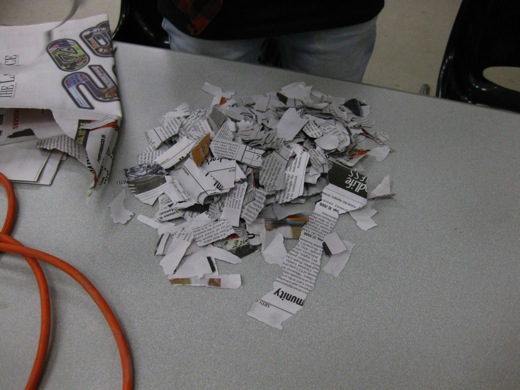
Tuesday night at Office Hours, we set about learning how to make paper from the many, many piles of newspapers we have, to create planters. The first step is to tear up a bunch of paper—it has to be torn, you can’t cut it, as the fibers need to be encouraged to break apart.
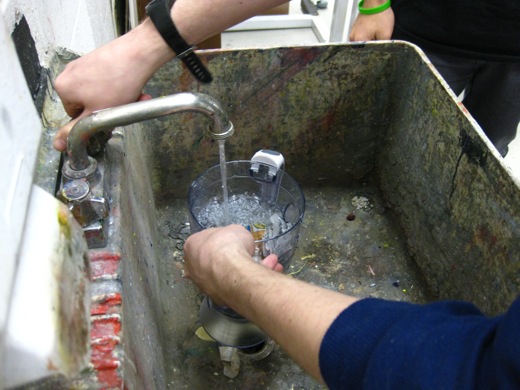
Filling up a blender with water. I’m not quite sure what the ratio should be, but probably something around 1 part paper for 4 parts water, if that makes sense. Basically, fill up the bottom quarter of the blender with paper, then the rest with water.
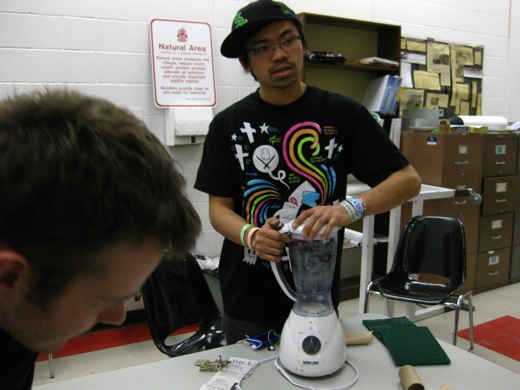
Make sure you seal the lid.
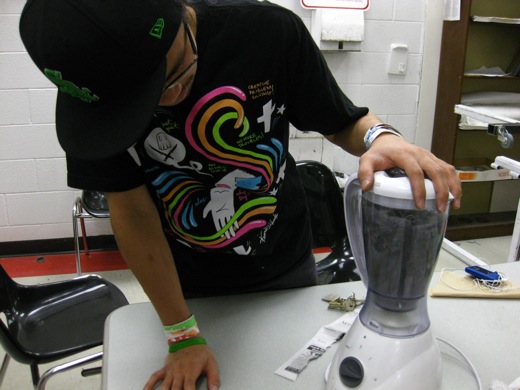
Then start the blender. Immony tried to put it on full blast at first.
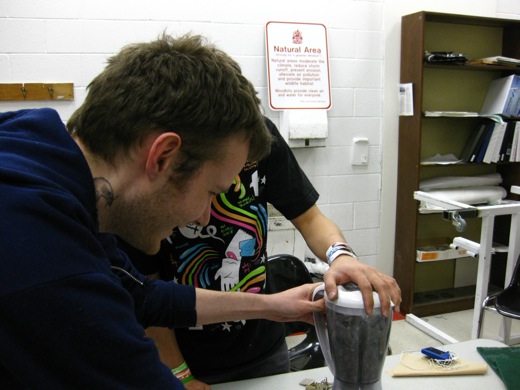
But Steven recommended we use the pulse setting, so as to prevent the blender from destroying itself.
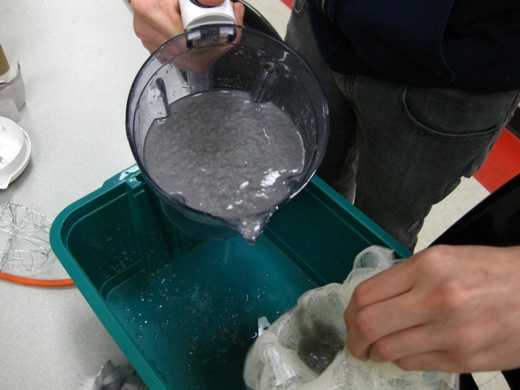
We didn’t have a screen, which is usually required for making paper, so instead Steven found some gauze, which we placed into a metal frame we had made last week.
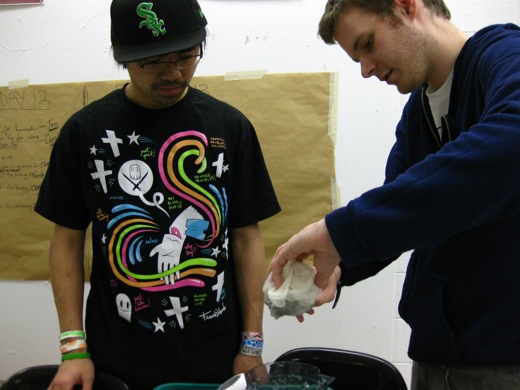
It seemed to work, but because it was a container into which we were pouring the pulp, it was collecting at the bottom more than lining the sides.
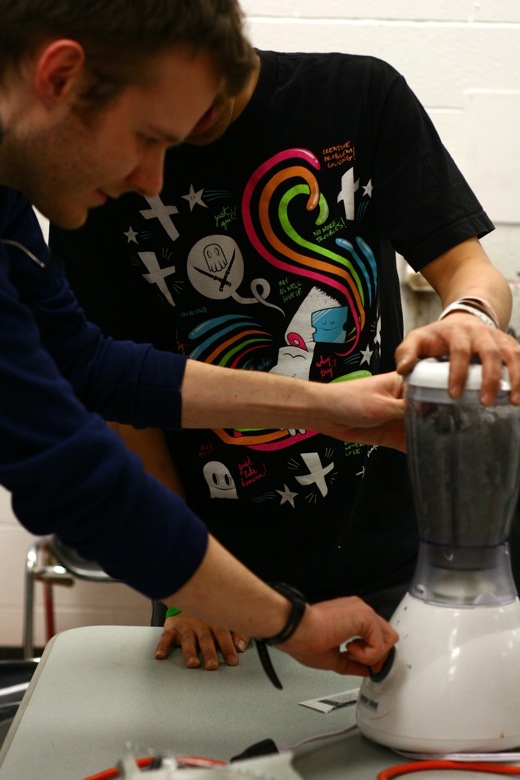
Steven and Immony hold down the blender as we make some more pulp.
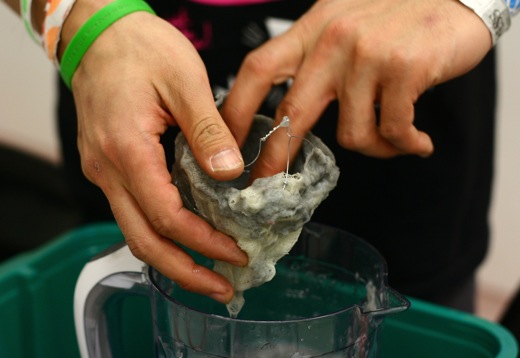
Immony trying to work with the paper pulp, the gauze, and the frame.
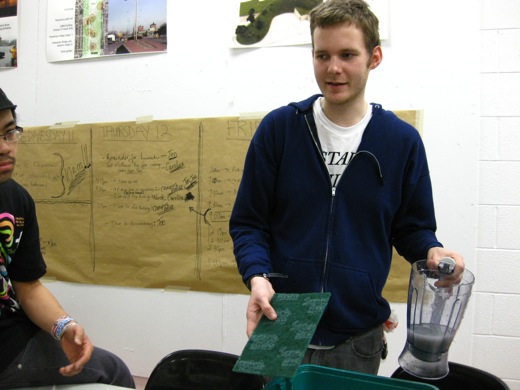
Steven then suggested trying to use this scrub pad, in place of a screen.
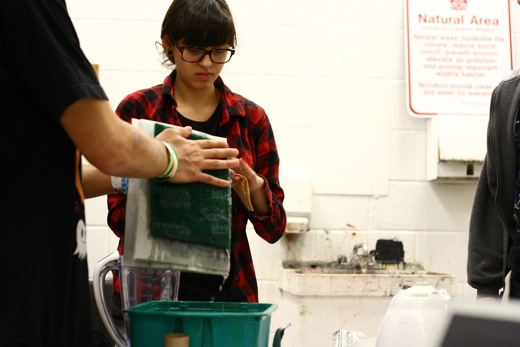
It worked well, and the process of draining water from the pulp was pretty easy, pressing it between other newspapers.
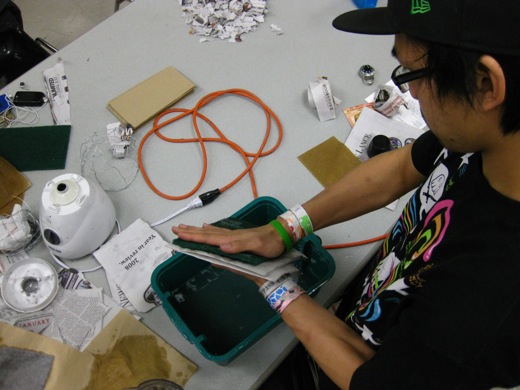
Immony draining the water from the pulp on the scrub pad.
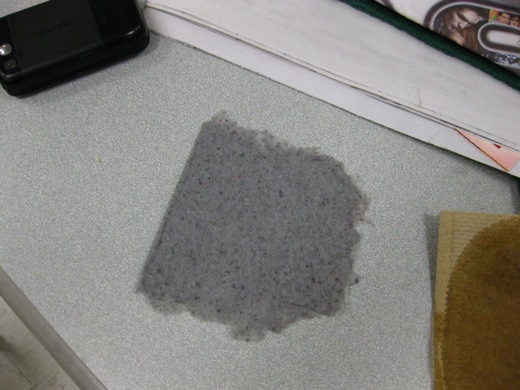
Our first piece of new paper!
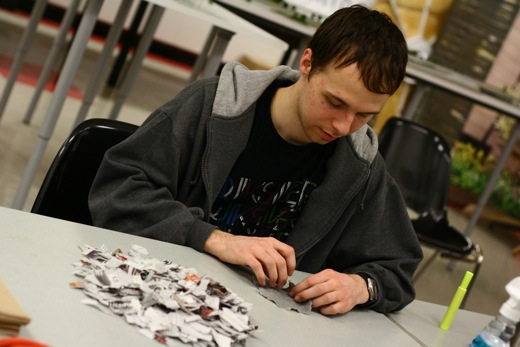
Josh started working with the new paper, we were trying to figure out how to shape it into something that could fit into a planter frame.
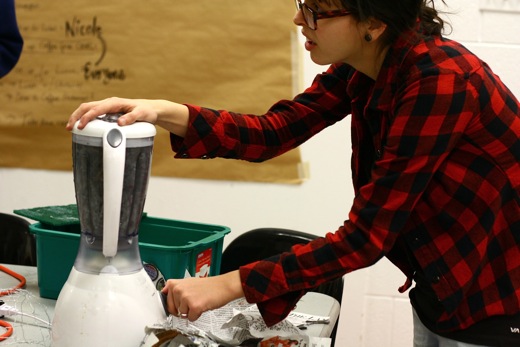
Danielle starts making another batch of paper.
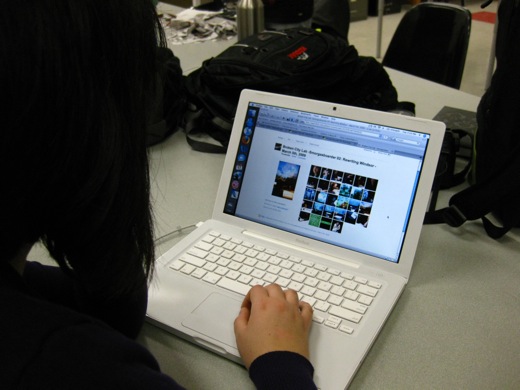
Meanwhile, Cristina was going through the photos from last week’s Rewriting Windsor event, there are a ton of great shots on her flickr page.
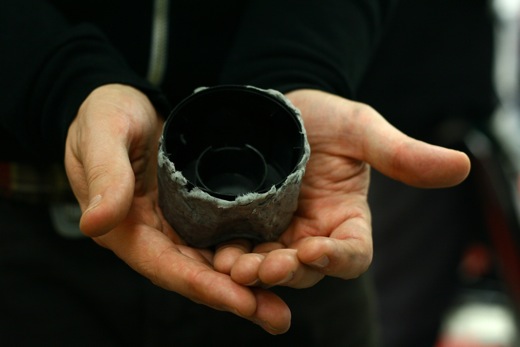
Then Steven brought in some spray paint can lids to wrap our new paper around.
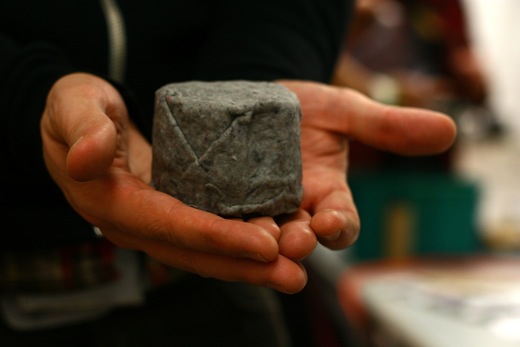
This process worked! Although I don’t have any photos since they’ve dried, they turned out really well, strong and they maintained their shape perfectly. We’ll continue working on this project in the coming weeks, hopefully more to report soon!

I think this is such a great idea guys!! How innovative and proactive. It’s interesting how much more powerful we can be as a TEAM of minds and hands.
Keep it up – can’t wait to see what happens next!
Bree